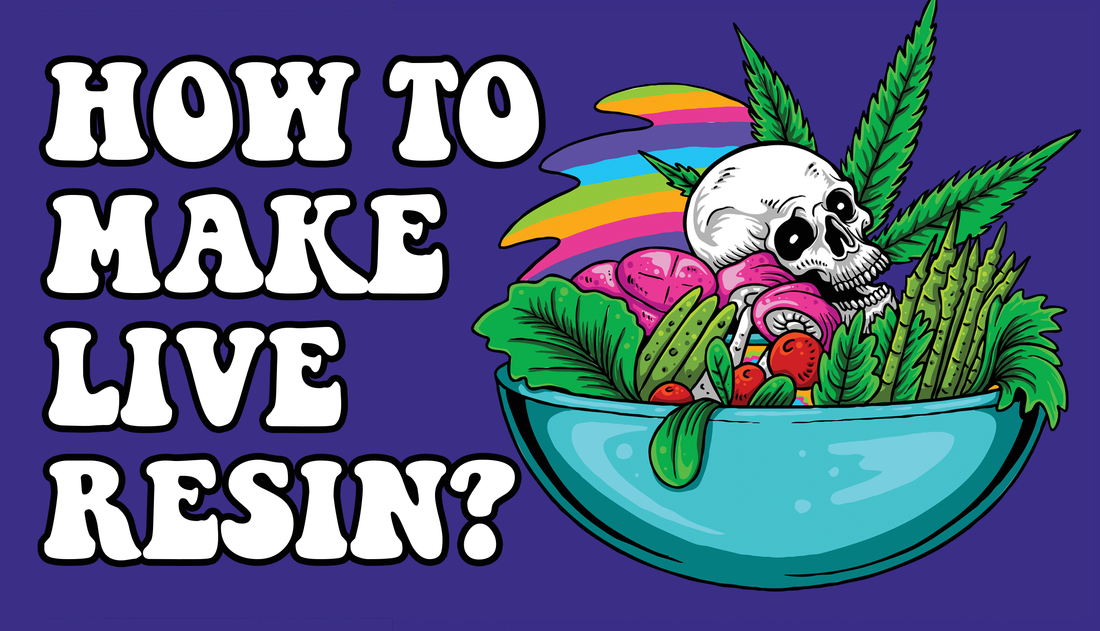Manufacturing live resin is not simple, involving extreme caution and the appropriate equipment. Furthermore, the legality of making live resin depends on the jurisdiction.
There is no legal framework for manufacturing cannabis-based concentrates, including live resin.
Possible Legal Issues
The legality of cannabis concentrates, including live resin, varies by state. In some states where recreational or medical cannabis is available, purchasing concentrates is legal.
However, consuming and producing live resin are very different, and making any wax from marijuana or hemp at home can be extremely dangerous.
Homemade live resin and wax are also not examined by a third-party lab for potency and purity, which could include leftover and harmful residuals from the extraction process.
Materials to Make Live Resin
1. Freeze Your Biomass: Instead of drying or curing the plant material, freeze it. Freezing preserves the essence of the "live" plant and helps maintain the terpene profile.
2. Extraction: Use a closed-loop extraction system and a solvent blend, such as butane or propane, to extract the cannabinoids and terpenes from the frozen biomass.
3. Post Processing: Skip the winterization process for live resin. Winterization is not necessary as it can remove some of the desired terpenes. Instead, focus on purging residual solvents from the extract.
4. Making Live Resin Products: Once the extraction and post-processing are complete, you can use the live resin to create various products. This can include dabbing with a dab rig, vaping with a dab pen, or adding it to a bowl or joint.
It's important to note that making live resin requires experience and specific equipment. It may not be an easy process for the average cannabis user.
If you want to make live resin, seeking proper training and equipment is recommended to ensure safety and quality.
Live Resin Manufacturing: Safety Precautions
When making live resin, it is crucial to prioritize safety to prevent accidents and ensure a safe working environment. Here are some safety precautions to consider:
1. Work in a well-ventilated area: Ensure proper air circulation in the room where you work with live resin. Open windows or use fans to maintain good ventilation.
2. Use proper safety equipment: When handling highly explosive and combustible solvents like butane or propane, it is essential to work in a laboratory equipped with the necessary safety equipment. This includes wearing protective clothing, gloves, and respirators if ventilation is poor.
3. Avoid skin contact: Live resin can irritate the skin, so it is important to wear disposable gloves to protect your hands. Consider nitrile gloves, which are less likely to react with the resin. If you have sensitive skin, applying a barrier cream before wearing gloves can provide additional protection.
4. Prevent resin drips: Resin can soak through clothing and cause irritation. Wear protective clothing that covers your skin, and avoid wearing your favorite clothes or shoes, as resin drips may not come out.
5. Label items: Mark and separate items used for working with resin to avoid confusion and prevent accidental ingestion or contamination.
6. Follow proper storage and disposal: Store live resin and any related materials safely and securely, away from heat sources or open flames. Follow local regulations for the appropriate disposal of any waste or byproducts.
Extracting live resin at home involves working with hazardous materials, making it dangerous. It should only be performed by professionals or individuals with the proper training and expertise.
Legal Aspect of Making Concentrates
The legal implications of making live resin at home vary depending on the state or country you are in. In some places, making live resin for personal use may be legal, while in others, it may be illegal. Research and understand the laws and regulations in your area before attempting to make live resin at home.
Live resin is a potent and flavorful type of cannabis concentrate. However, knowing the risks involved in making live resin is critical.
Homemade Live Resin Isn't Lab-Tested
The most accurate and reliable method is lab testing to test the purity of live resin. Lab testing can determine the potency and purity of the resin, providing detailed information about its cannabinoid and terpene profile.
Lab testing typically involves analyzing the resin for various factors, including THC and CBD content, terpene composition, residual solvent levels, and potential contaminants. This testing ensures the live resin meets quality and safety standards.
The testing process is complex and requires specialized equipment and expertise. As a consumer, you may need more resources to perform these tests at home. This goes for all concentrates, including hemp-derived cannabinoids like Delta 8 distillate and THC-O and others.
Therefore, if you are purchasing live resin, it is advisable to choose sellers or dispensaries that provide lab-tested products. This ensures you get a high-quality and pure product.
Choose Professional Quality
Making live resin at home is a complex and dangerous process. It demands proper training, equipment, and safety rules. It also carries legal consequences depending on your area. The most secure way to use live resin is to get it from trustworthy sources that deliver lab-tested products.
Butane and propane are flammable materials, so you must be responsible, take safety precautions, and follow local laws and regulations if attempting to extract concentrate. We highly advise purchasing from a trusted manufacture, such as Injoy Extracts for Delta 8 distillate, HHC and more.




